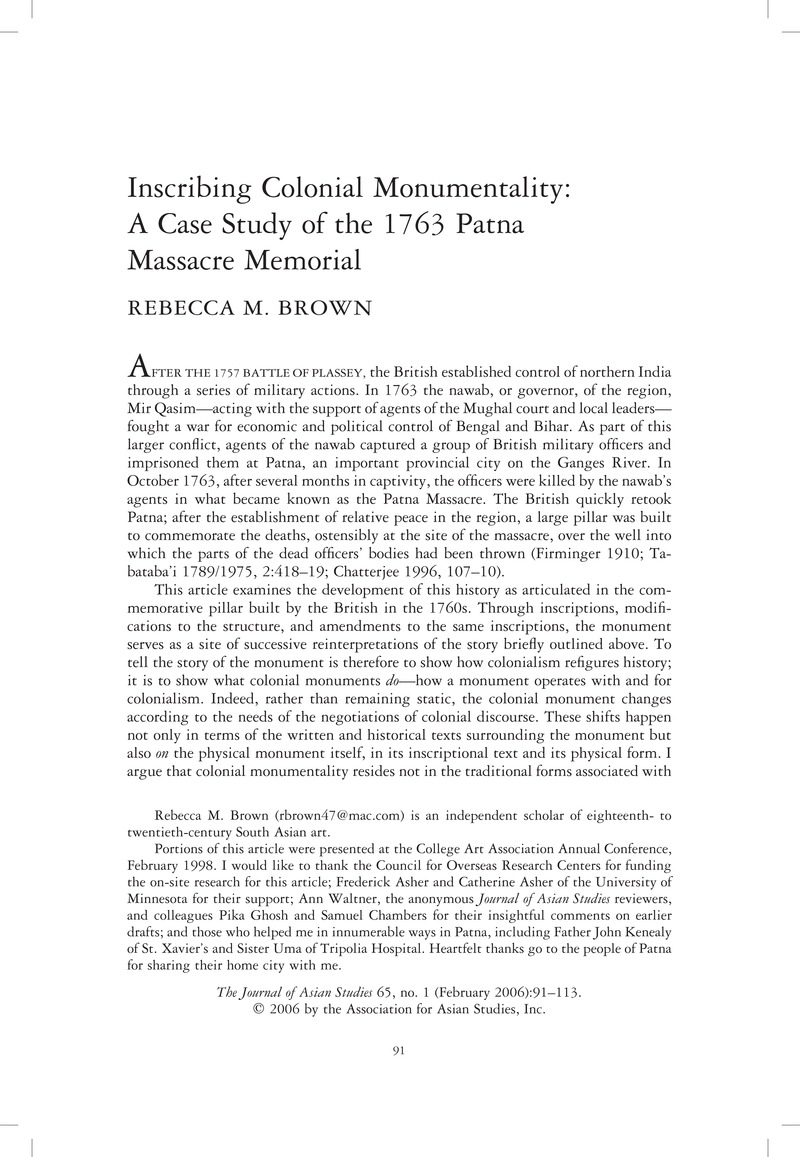Crossref Citations
This article has been cited by the following publications. This list is generated based on data provided by Crossref.
Johnson, David A.
2018.
New Delhi’s All-India War Memorial (India Gate): Death, Monumentality and the Lasting Legacy of Empire in India.
The Journal of Imperial and Commonwealth History,
Vol. 46,
Issue. 2,
p.
345.





